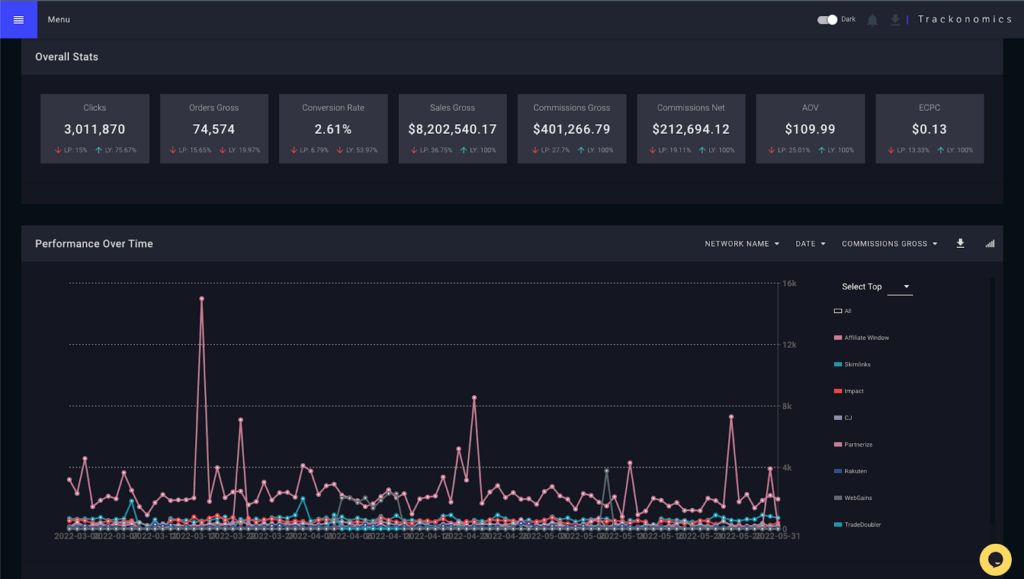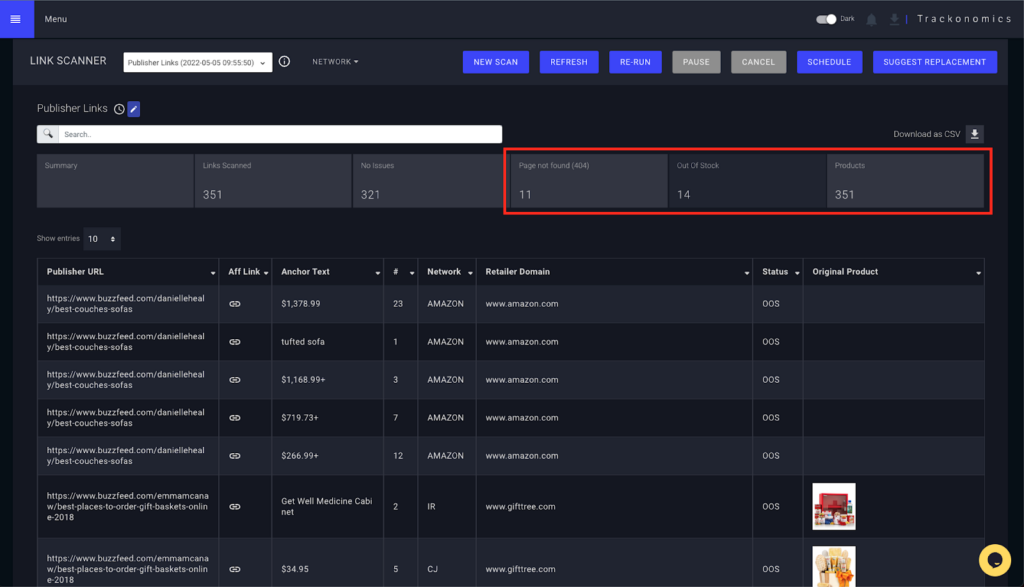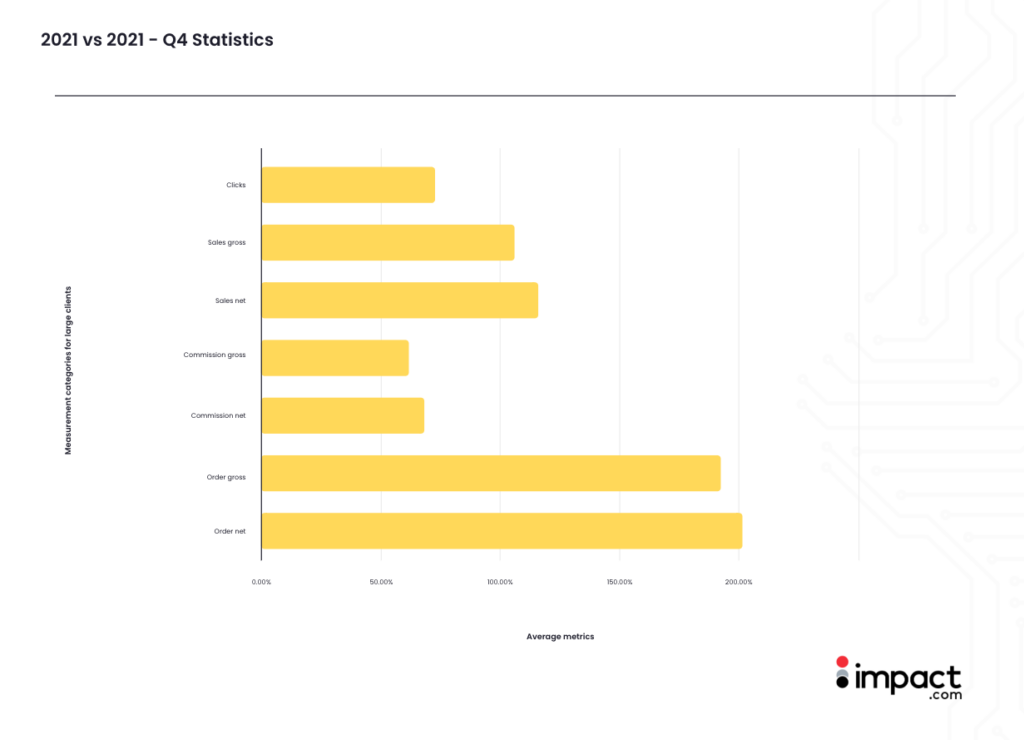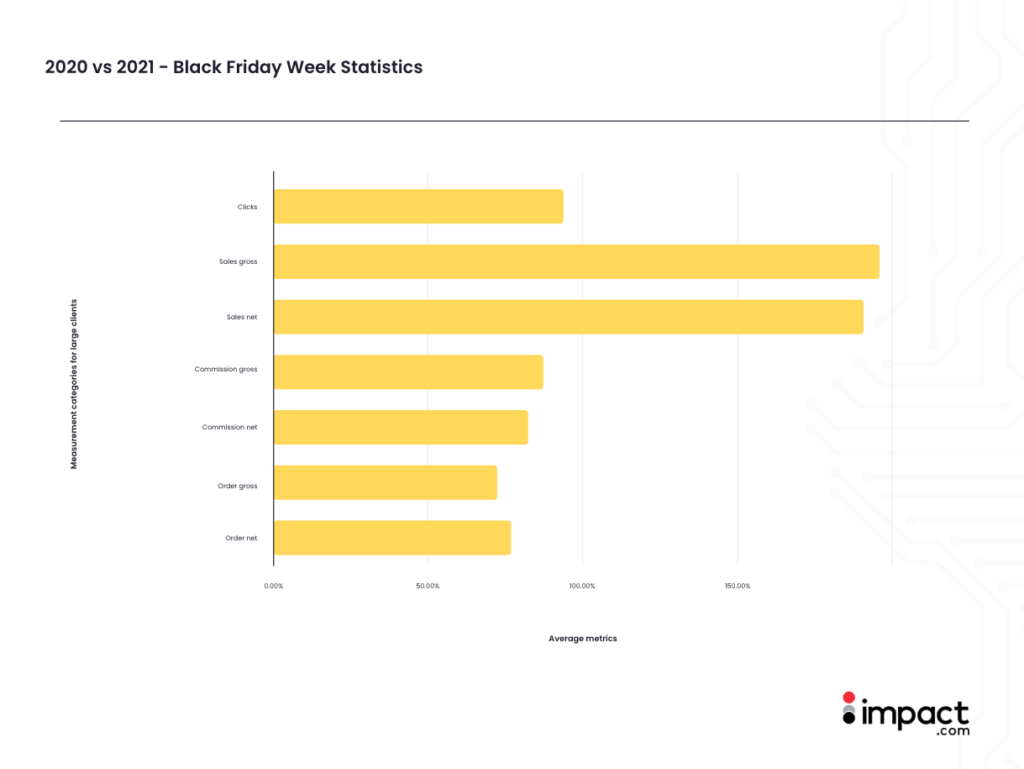As competition for consumer attention rises, publishers find that authentically connecting with the right people can make all the difference. Luckily, commerce content helps you do just that.
Whether you realize it or not, you probably see examples of commerce content online every day. A few examples include:
- Influencers weaving product recommendations into social media posts
- Review sites incorporating affiliate links into in-depth product comparisons
- Podcasts providing partnership links to brands that fit their focus and style
Brands and publishers work together to monetize independent blogs, articles, guides, videos, and more through affiliate links and sponsorships—and this benefits both sides. Digital publishers focus on creating great content, growing their audience, and earning commissions. On the other side, brands build lasting relationships with high-quality publishers, gain access to new audiences, and increase revenue.
Publishers see commerce content success when they create compelling content that also educates audiences about relevant brands. However, the world of commerce content keeps changing, forcing brands and publishers to optimize their strategies to keep pace.
How have customer priorities have changed?
Overall the past several years, brands witnessed a significant change in how consumers shop for products. Digital commerce rose by 25 percent in 2020, demonstrating a seismic shift in how people research products and make purchases. Potential customers want information they can trust, and they seek valuable guidance to navigate overwhelming online options.
Brands also find themselves under a stronger spotlight. A May 2020 survey on customer behavior uncovered some illuminating insights into today’s consumer expectations:
- Access to purchasing information. 58.8 percent of U.S. marketing leaders surveyed reported that customers do more research before buying.
- More content about products and brands. Almost 60 percent of marketers surveyed noted a significant rise in product reviews and brand-focused content.
- Increased transparency and commitment. 79.1 percent of marketing leaders surveyed reported greater acknowledgment of ethical and positive brand actions.
To meet these expectations, some content creators and platforms have built an entire career out of testing products, writing gift guides, and publishing how-to articles. Customers want information about products and the brands behind them—not intrusive ads or bland sales pitches.
Publishers must adapt to win the commerce content race
There’s no set formula for winning the commerce content race. The constant shifts in consumer behavior and industry standards keep publishers on their toes. In order to see success with your commerce content program, keep your finger on the pulse of trends and continually adapt to your audience’s needs.
Since consumer trust factors in more than ever, it’s important to maintain editorial integrity. Only promote brands and products that fit your values and goals. Many experienced online shoppers immediately see through biased brand sponsorships or partnerships. To succeed and reach potential customers, work with compatible brands and present genuine reviews and recommendations.
But successful commerce content isn’t just about promoting the right brands or products. To capture people’s attention, you also need compelling content that simultaneously entertains and informs.
Evolving with the times is a constant challenge. How can you keep improving and growing your audience?
Five ways to strengthen your commerce content
As a publisher, your well-crafted commerce content drives interest and traffic, translating to affiliate commission payments and revenue growth for your business. But like many publishers, you may face some common hurdles.
Focusing on these challenges and how to overcome them can guide your future publishing strategy. Here are five ways to do that.
1. Seeing page and article-level analytics
If you want to optimize your content, a broad analytical overview of each program or brand sponsorship isn’t enough. While many tools make it easy to see revenue at a high level, if you track specific pieces of content you’ll get more actionable data.
You need to attribute value to every piece and understand which types of content perform better than others. Granularly following content performance helps you:
- Make sound publishing decisions
- Strategize for future projects
- Get buy-in from key stakeholders
It’s important to find a robust commerce content solution that provides analytics for each page and article—not just a bird’s eye view.
2. Consolidating data from various sources
Page- and article-level analytics better inform your content planning, but this data often spans different platforms. You’ll miss out on a unified performance overview if you manually track and collate siloed data streams.
Manually consolidating your data from various sources is usually:
- Labor-intensive
- Time-consuming
- Error-prone
Move away from manual data gathering and find solutions that automatically integrate information to give you a holistic view of performance.
3. Manually creating affiliate links across different platforms
When you join multiple affiliate platforms and carefully curate your partners, you aim to earn the most revenue possible. Unfortunately, finding the best commission for a program often involves logging into every platform and manually comparing offers. This is inefficient—and time is in short supply for even the most resourced publishing team.
Instead, seek out automation tools that compare commissions across platforms and pull an affiliate link with the best payout—all in one place.
4. Driving traffic to dead links and out-of-stock items
Over time, affiliate links can break and send potential customers to 404 error pages. Brands may also run out of specific publisher-recommended products, leading your audience to out-of-stock messages. This is called link rot.
Dead links create a terrible experience for potential customers and cast your content and brand partner in a bad light. As you try to boost revenue and optimize your commerce content program, oversights and broken links become increasingly costly.
You’re always looking forward and thinking about the next piece of engaging content to develop. Taking the time to continuously fix broken links in existing content forces you to look backward. Although it’s important to give your audience the best shopping experience possible, manual link maintenance can quickly burn up your time.
Automated tools for eliminating broken links take the weight of link maintenance off your shoulders and free up more time for what’s at the heart of your business: content creation.
5. Integrating new affiliate networks
Joining new affiliate networks drives continuous program growth but it often leads to arduous onboarding processes and laborious integrations. These costly, intensive engineering requirements can distract editorial teams from more important work—especially smaller teams.
Publishers need to smoothly integrate with new affiliate networks without bringing in additional parties. This way, you can open up additional revenue opportunities without slowing down publication.
How Trackonomics gets your commerce content program into shape
Trackonomics by impact.com—a part of the impact.com for Publishers suite—allows publishers to establish direct partnerships with brands and cuts out adtech intermediaries. Rather than paying and relying on third-party technologies, you can directly manage and track your brand deals with Trackonomics software.
Discover more about Trackonomics’ solutions for the whole commerce content life cycle.
Detailed analytics provide deeper insights
Attribution allows you to identify which partners and types of content inspire the most conversions from your audience. When traffic comes in, you’ll need access to detailed analytics on both the page level and the article level to make informed, strategic decisions in the future.
Trackonomics attributes revenue to content pages instead of just focusing on affiliate links. It allows you to carefully follow content performance and separate it into customizable categories like:
- User path
- Top-performing SEO keywords
- Revenue per page
- High-value content pages
Once you see which themes and styles work best with your audience, you can zero in on the types of content that bring the best return on investment (ROI).
Unified tracking and reporting breaks down data silos

Trackonomics offers a unified view of your affiliate data, bringing siloed information together in one place without the need to manually import or log into each network.
The platform can also pull in data from sources like Google Analytics or SEMrush, allowing you to easily create a holistic publishing strategy that accounts for all your marketing channels.
Automated link generation saves valuable time
Trackonomics lets you dynamically create links across your affiliate networks with one simple click. If multiple links for the same product exist on different affiliate platforms, it automatically pulls the link with the highest commission. Trackonomics customers report a 160 percent boost in productivity from link automation tools alone.
While you can easily create links directly on the Trackonomics platform, you can also use the Google Chrome plugin. The plugin allows you to generate links without signing into the Trackonomics dashboard or multiple affiliate networks each time.
Broken link detection creates a seamless user experience

Incorrect links, 404 error pages, and dead links can cost publishers and brands a fortune. Trackonomics’ Link Scanner sweeps your website for broken links, helping you avoid link rot over time. Link Scanner saves publishers an estimated 8 to 12 percent of monthly revenue.
By quickly catching and repairing problematic links, you’re:
- Giving your audience a smooth shopping experience
- Representing yourself and your brand partners in the best light
- Earning the most revenue possible
APIs simplify affiliate network integration
As your program grows, you’ll join more affiliate platforms and have more opportunities to earn revenue. Trackonomics provides aggregation Application Programming Interfaces (APIs) to streamline the onboarding and integration processes when you join new networks, saving valuable time and effort so you can focus on creating new content.
Tracknomics boosts your program’s performance
Trackonomics supports large publishers like enterprise media corporations that have several brands in their portfolio. However, the platform also meets the needs of publishers with smaller, niche audiences. With Trackonomics, publishers of all sizes can grow their business, join more affiliate networks, and access more data than ever.
Trackonomics helps publishers optimize their commerce content programs and see better results over time.
Want proof? Let’s examine the effect Trackonomics had on large publishers over the course of a year.
Fueling growth at breakneck speeds

Comparing the last quarter of 2020 to the same quarter in 2021, large Trackonomics clients saw significant growth. All categories increased by at least 60 percent, with order gross and order net doubling.
By creating efficiencies and consolidating performance data, Trackonomics helped publishers grow their audiences and provide more value for their brand partners. Through powerful automation and flexible tracking, these clients generated impressive results in just one year.
Creating more lucrative partnerships

Narrowing in on Black Friday week 2020 vs 2021, the difference in revenue and user activity before and after Trackonomics’ implementation comes into sharper focus.
Even categories with less growth increased by around 80 percent. These publishers earned more commissions while helping their partner brands significantly expand their business.
Looking at this data, you can see how Trackonomics empowers publishers to maximize the impact of their commerce content programs.
How Trackonomics by impact.com prepares publishers for the future
Well-crafted content continually earns publishers revenue over time. Traditional ads, by design, focus on generating buzz right now. Compared to content, ads are a short-term investment.
As a content creator, you’re in it for the long haul. You recognize that it’s a marathon, not a sprint.
With high-quality commerce content there’s no built-in cap on potential earnings. This type of content stays evergreen, consistently entertaining and informing audiences while directing traffic to brand partners. But how do you design content that continues to generate revenue far into the future?
Think long-term with consumer-focused content
People want to consume engaging content. If you bring together thoughtful recommendations, informative material, and entertainment in one package, you’ll form deeper connections with your audience.
Inauthentic, shallow content struggles to find traction among users today. As a publisher, you’ll cultivate a loyal following and drive the most revenue by creating content that feels organic and honest. According to a survey by Stackla, 88 percent of consumers say authenticity is important when deciding which brands they like and support—and half say it’s imperative.
With Trackonomics by impact.com you can quickly identify which content and programs resonate the most with your audience. When you track content performance trends you can focus more on content that produces genuine customer interest. Consumer habits keep changing and successful publishers need to keep up.
Building long-lasting partnerships
Effective commerce content partnerships are a two-way-street:
- Brands benefit. Publisher content increases sales and customer traffic for the brand.
- Publisher benefit. Publishers can monetize content to grow audiences and fund better content over time.
When managed well, these partnerships work as long-lasting business models for both parties.
Trackonomics allows publishers to build stronger partnerships. You gain access to more comprehensive insights and actionable reports, which enable you to continuously optimize partnerships performance. Automated workflows and increased efficiency also free up time to improve your content and focus on other, more innovative ways to work with brand partners. Instead of taking a one-and-done approach, Trackonomics encourages long-term commerce content relationships.
In addition to affiliate partnerships, Trackonomics improves connections between publishers and their audiences. With traffic and conversion trends at your disposal, you can give audiences the kind of content they crave. In fact, 40 percent of digital publishers said commerce content boosted engagement while 36 percent saw audience growth.

Future-proofing digital publishing with AI and automation
When it comes to future changes in consumer behavior, technology, and economic activity, reliance on manual tracking and workflows can leave you vulnerable. As competition in the commerce content space heats up, implementing AI and automation to increase efficiency will become vital to keeping pace.
With Trackonomics, you can automate some of your most tedious tasks, such as:
- Pulling reports from affiliate networks and non-affiliate sources
- Generating the most lucrative affiliate link across different networks
- Identifying your most valuable sources of traffic
- Fixing broken links and links to out-of-stock items
These automation tools can improve your ROI by giving you more time to adapt and future-proof your business.
Start optimizing your commerce content program today
With changes in consumer behavior dramatically shifting, now’s the time to jump into commerce content with both feet. Optimizing your program at this moment could pay dividends in the future and help you cultivate a sustainable new revenue stream.
With Trackonomics and the other tools that are part of the impact.com for Publishers suite, you’ll reach new audiences and generate more revenue than ever before. Find out more to grow your commerce content program and boost revenue.





